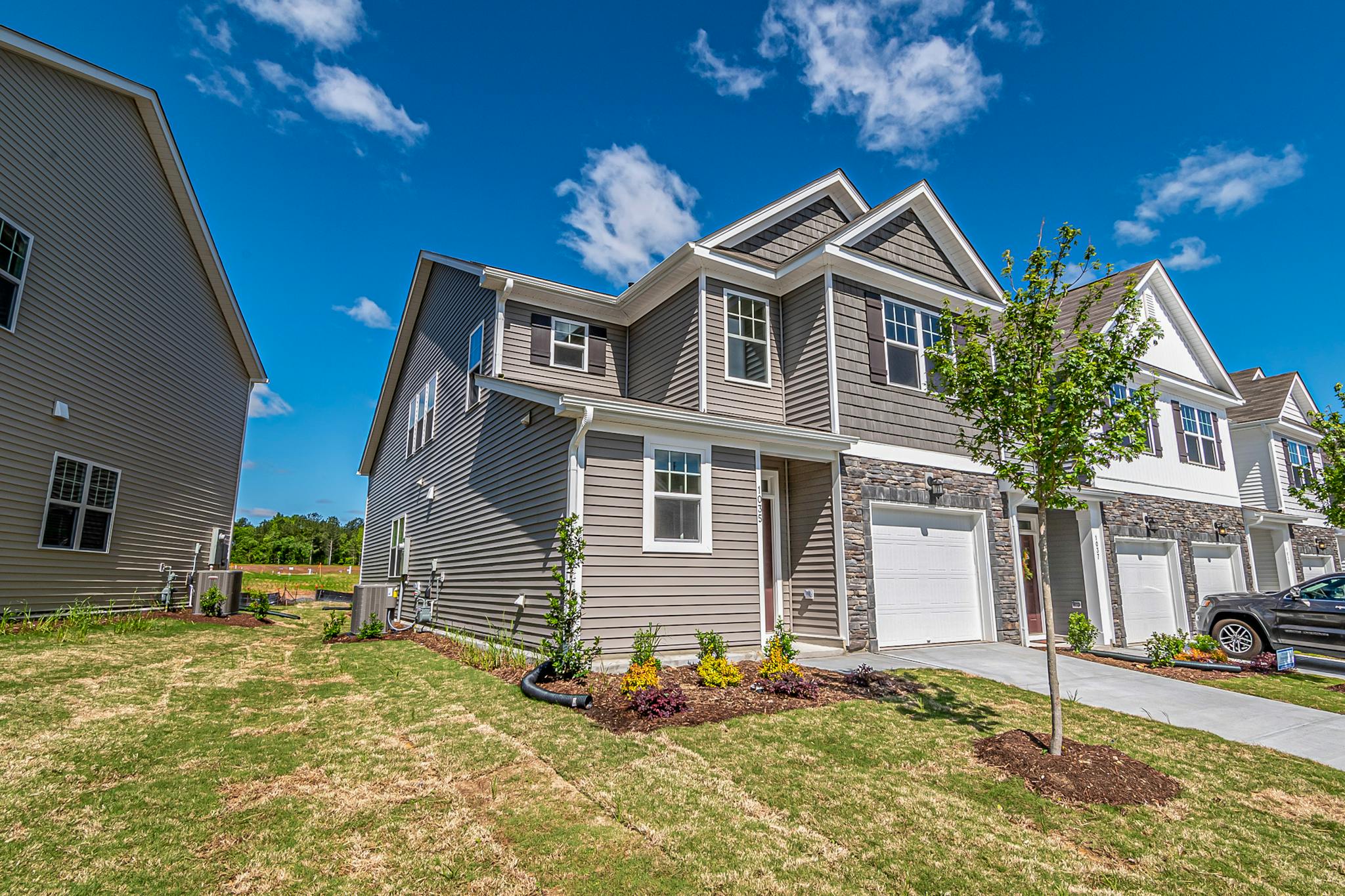How to Start Rental Properties: A Step-by-Step Guide
It’s no secret that, when done right, entering the world of rental properties can be your gateway to building lasting wealth and achieving financial freedom. Whether you’re a seasoned investor or a complete novice, this step-by-step guide on how to start rental properties will help you unlock the doors to successful property ownership.
From understanding market dynamics to choosing the right location and property type, we’ll walk you through each critical phase of the rental property journey. Discover how to navigate the complexities of financing, property management, and tenant relations, ensuring a smooth and profitable experience. If you’re ready to embark on this exciting adventure, take the time to read through this, and you’ll gain invaluable insights… ones that will empower you to make informed decisions and pave your way to success.
Alright, let’s dive into the work here…

Understanding the Rental Property Market
Before making any rental property investments, it’s crucial to understand market dynamics. The rental property market is influenced by various factors such as economic conditions, population growth, and housing supply and demand.
Economic conditions, including employment rates and income levels, can significantly impact the rental market. When the economy is strong, people are more likely to rent, leading to higher demand and potentially higher rental rates. Conversely, during economic downturns, rental demand may decrease, affecting your potential returns.
Population growth is another critical factor that can influence the rental market. Areas experiencing population growth often have increased demand for housing, including rental properties. This surge in demand can lead to higher rental prices and lower vacancy rates, making it a favorable environment for rental property investors. Conversely, areas with declining populations may see reduced demand for rentals, leading to increased vacancies and pressure on rental prices.
The supply and demand balance in the housing market is also crucial to understand. If there is a shortage of rental properties in a particular area, landlords have more leverage to charge higher rents. On the other hand, if there is an oversupply of rental properties, it can lead to increased competition among landlords and potentially lower rental rates. Keeping an eye on local housing development projects and understanding the current supply and demand dynamics can help you make informed investment decisions as you first learn how to start rental properties.
Also, don’t sleep on secondary and tertiary cities, some of the hottest investment spots right now.
Benefits of Investing in Rental Properties
Investing in rental properties offers numerous benefits that make it an attractive option for wealth building. One of the primary advantages is the potential for passive income. Rental properties can provide a steady stream of income, which can help cover mortgage payments, property maintenance, and other expenses. Over time, especially as rental rates rise, your rental properties can provide a consistent and potentially increasing source of passive income.
Another significant benefit of rental property investments is appreciation. Real estate properties tend to appreciate in value over the long term, meaning the property you purchase today could be worth significantly more in the future. This appreciation can contribute to your overall wealth and provide you with a valuable asset to leverage for further investments, or to sell at a profit.
Rental properties also offer tax advantages that can enhance your overall return on investment. Many expenses associated with owning and managing rental properties, such as mortgage interest, property taxes, insurance, and maintenance costs, may be deductible. Additionally, depreciation allows you to deduct a portion of the property’s cost over time, reducing your taxable income. These tax benefits can help offset your expenses and increase your net income from the property.

How to Start Rental Properties – Set Your Investment Goals
Setting clear investment goals is a crucial step in your rental property journey. Your goals will guide your investment strategy and help you stay focused.
Start by defining your financial objectives. Are you looking for immediate cash flow, long-term appreciation, or a combination of both? Cleary defining your financial goals upfront will help you determine the type of rental properties to invest in and also which specific strategies to employ.
Next, consider your risk tolerance. Real estate investments come with varying levels of risk, and it’s essential to assess how much risk you’re willing to take. Some investors prefer stable, lower-risk properties with consistent rental income, while others may be comfortable making higher-risk investments with more potential for significant appreciation.
Make sure you’re honest with yourself and keep your goals crystal clear, because your risk tolerance will influence your investment decisions and the types of properties you pursue.
Additionally, keep it SMART! Set specific, measurable, achievable, relevant, and time-bound (SMART) goals. For example, you might set a goal to acquire two rental properties within the next five years that generate a positive cash flow of $500 per month each.
Having SMART goals will provide you with clear milestones to strive for and help you track your progress. Regularly review and adjust your goals as needed to ensure you stay on track and continue moving toward your financial objectives.
Financing Your First Rental Property
Securing financing for your first rental property is a critical step in your investment journey. There are several financing avenues to explore, each with its own distinct advantages and considerations.
Traditional mortgages are a common choice. These loans typically require a down payment of 20-25% and have fixed or adjustable interest rates. It’s essential to have a strong credit score and a stable income to qualify for favorable loan terms.
Another financing option is private money lenders. These individuals or groups provide loans based on the property’s potential rather than the borrower’s creditworthiness. Private money lenders can offer more flexible terms and faster approval processes, making them an attractive option for investors who may not qualify for traditional mortgages. However, interest rates on private loans tend to be significantly higher, so it’s essential to weigh the costs and benefits.
You can also consider partnerships or joint ventures to finance your rental property. Partnering with other investors can help you pool resources and share the financial burden. Joint ventures can provide access to more significant properties and diversified investments. However, exploring this avenue absolutely requires clear agreements in place regarding profit sharing, management responsibilities, and exit strategies to avoid potential conflicts.
The last thing you want when entering the world of rental properties is stress at the very first level, the property acquisition itself. It’s a long road to success, so make sure you start off on the right foot!

Choosing the Right Location for Your Investment
When someone tells me they want to learn how to start rental properties, one of the first things I mention is that selecting the right location is one of the most critical factors in the success of your investment. A property’s location can significantly impact its rental income potential, appreciation, and overall profitability too.
Start by researching areas with strong economic growth, low unemployment rates, and diverse employment opportunities. These factors can directly attract tenants and contribute to a stable rental market.
Consider the neighborhood’s amenities and infrastructure. Proximity to schools, hospitals, shopping centers, public transportation, and recreational facilities can make a property more attractive to any potential tenants. Additionally, areas with low crime rates and a strong sense of community tend to have higher demand for rentals as well, allowing you to charge higher rents and reduce vacancy rates.
It’s also essential to analyze the local rental market. Research rental rates, vacancy rates, and tenant demand in the area. Look for neighborhoods with the ideal combination of rising rental prices and low vacancy rates, as these indicators suggest a healthy rental market.
Additionally, consider future development plans, such as new businesses, infrastructure projects, or zoning changes, that could positively impact the area’s desirability and rental demand.

Types of Rental Properties to Consider
There are various types of rental properties to consider, each with its advantages and considerations. Single-family homes are a popular choice for many investors due to their broad appeal to families and individuals. These properties typically offer stable rental income and lower tenant turnover rates. However, single-family homes may require more maintenance and management compared to multi-family properties.
Multi-family properties, such as duplexes, triplexes, and apartment buildings, offer the potential for higher rental income and economies of scale. With multiple units in one property, you can spread the risk of vacancies and maintenance costs across several tenants. Multi-family properties can also provide opportunities for value-add strategies, such as renovations or rent increases, to enhance your returns. However, managing multi-family properties can also be more complex and time-consuming.
Vacation rentals and short-term rentals, such as those listed on platforms like Airbnb, have gained popularity in recent years. These properties can generate higher rental income compared to long-term rentals, especially in tourist destinations. However, short-term rentals require more intensive management, frequent tenant turnover, and compliance with local regulations.
Make sure you weigh the potential benefits and challenges before investing in vacation rentals.While they may offer a special allure due to the higher rates you can charge tenants, the downsides may actually make them the least attractive of all rental property options.
Research thoroughly and choose wisely.
The Importance of Conducting Property Inspections
Conducting thorough property inspections is essential before purchasing a rental property. Inspections help identify potential issues and ensure you’re making an informed investment decision.
Start with a general inspection to assess the property’s overall condition. Look for signs of structural damage, roof issues, plumbing and electrical problems, and any visible wear and tear. A general inspection will at least provide a baseline understanding of the property’s condition.
Consider hiring specialized inspectors for more detailed assessments. A pest inspection can identify any infestations or potential damage caused by termites or other pests.
A mold inspection is a must, especially if the property is in an area with significant humidity. I wouldn’t recommend purchasing a property without first confirming that it’s mold-free, since mold can pose serious health risks to tenants and require costly remediation.
Additionally, a sewer inspection can uncover issues with the property’s plumbing system, preventing potential blockages or leaks. This another potentially costly area for repairs if it’s missed during inspections.
Reviewing the property’s maintenance history and obtaining a professional appraisal can also provide valuable insights. Understanding the property’s maintenance history can help you anticipate future repair and maintenance costs.
Finally, an appraisal can confirm the property’s market value, ensuring you’re paying a fair price.
All of these aforementioned steps can help you avoid costly surprises and make a well-informed investment decision.

Navigating Landlord-Tenant Laws
Understanding and complying with landlord-tenant laws is crucial for successful property management. These laws vary by state and locality, so it’s essential to familiarize yourself with the regulations in your area. Landlord-tenant laws govern nearly all aspects of the rental relationship, including lease agreements, security deposits, rent increases, and eviction procedures too.
Lease agreements need to clearly outline the terms and conditions of the rental arrangement. Include details such as rent amount, payment due dates, lease duration, and tenant responsibilities. Ensure the lease complies with local laws and includes provisions for handling disputes or violations. Having a well-drafted lease agreement helps protect your rights and provides a clear framework for the rental relationship.
Security deposits are a common source of disputes between landlords and tenants. Familiarize yourself with the regulations regarding security deposit amounts, handling, and return procedures. Properly document the property’s condition before and after the tenancy to avoid conflicts.
Last but not least, understand the legal requirements for rent increases and eviction procedures to ensure compliance and avoid legal issues.
Tips for Effective Property Management
Effective property management is essential for maximizing your rental property’s profitability and ensuring a positive experience for both you and your tenants. Start by establishing clear communication with your tenants. Open and transparent communication can help build trust and address any issues promptly. Provide tenants with multiple ways to contact you and respond to their inquiries in a timely manner.
Regular property maintenance is crucial for preserving the property’s value and keeping tenants satisfied. Create a maintenance schedule to address routine tasks such as HVAC servicing, landscaping, and pest control. Promptly address any repair requests to prevent small issues from becoming more significant problems. Regular maintenance can also help you identify potential issues early and plan for necessary repairs.
Many rental property owners prefer to hire a professional property management company. These are esssential if managing the property becomes too time-consuming or complex, but it can be a great part of your initial investment plan as well – especially if you’re willing to sacrifice a little profit for some extra peace of mind (so the income truly feels more like passive income).
Property management companies can handle various tasks, including tenant screening, rent collection, maintenance coordination, and lease enforcement. While there are costs associated with hiring a property manager, their expertise and efficiency can be a huge difference maker for you.
Pay special attention to this one as you learn how to start rental properties! A misstep when it comes to property management can quickly make what looked like a great investment suddenly feel like a big mistake.

Conclusion: Taking the First Step Towards Wealth Building
Embarking on your rental property adventure is an exciting and rewarding endeavor.
As you take the first step towards wealth building through rental properties, remember that knowledge and preparation are your greatest assets! Stay informed about market trends, continuously educate yourself, and adapt your strategies as needed.
I hope you enjoyed this guide on how to start rental properties. With dedication, persistence, and a well-executed plan, you can unlock the doors to greater financial freedom, as your rental property journey paves the way to a more prosperous future.


